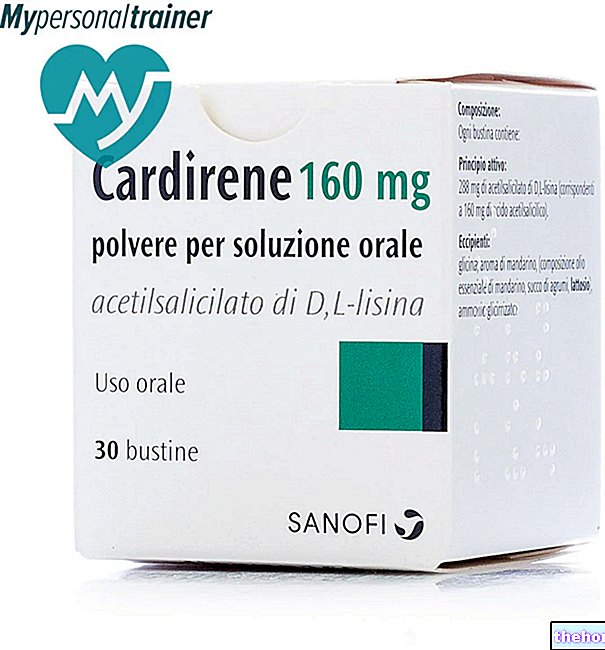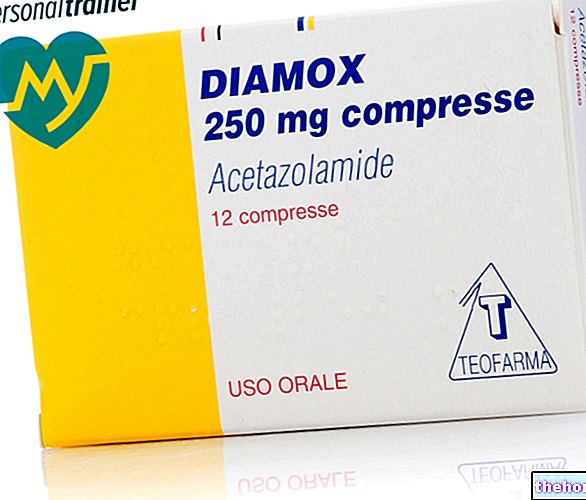Active ingredients: Progesterone
PRONTOGEST 50 mg / ml solution for injection
PRONTOGEST 100 mg / ml solution for injection
Indications Why is Prontogest used? What is it for?
PHARMACOTHERAPEUTIC CATEGORY
Progestogens.
THERAPEUTIC INDICATIONS
In the preparation for gynecological and extragynecological surgeries to be performed during pregnancy; threat of abortion; habitual abortion; threat of premature birth; hypermennorrhea, polymenorrhea, metrorrhagia, amenorrhea, hypomenorrhea, oligomenorrhea, premenstrual syndrome; prophylaxis of post-partum depression. Progestin supplement in the luteal phase during spontaneous or induced cycles, in case of hypofertility or primary or secondary ovarian failure.
Contraindications When Prontogest should not be used
Hypersensitivity to the active substance or to any of the excipients, vaginal bleeding of an unknown nature, internal or incomplete abortion, current or previous thromboembolic disorders, cerebral haemorrhage, thrombophlebitis, severe hepatic insufficiency.
Precautions for use What you need to know before taking Prontogest
Since progesterone can cause some degree of retention, conditions that could be affected by this factor, such as epilepsy, migraine, asthma, and heart or kidney failure, should be monitored. Patients with a history of mental depression require "careful observation during treatment with Prontogest. In diabetics, progestogenic hormones can determine or aggravate states of water retention and reduce glucose tolerance. If a histological examination is to be performed, it should be noted that the patient is being treated with Prontogest
Interactions Which drugs or foods can modify the effect of Prontogest
No interactions with other drugs have been reported.
Warnings It is important to know that:
It is necessary to pay attention if during the treatment symptoms of partial or total loss of vision or diplopia appear and to interrupt the treatment itself if papillary edema or lesion of the retinal vessels is ascertained.
The same must be said of the first symptoms that may indicate thrombotic disorders affecting the peripheral, cerebral or pulmonary vessels.
Particular attention must also be paid to subjects in whom there are alterations in endocrine tests and liver function; in such subjects the treatment should be stopped and the tests repeated after about two months.
Progestogenic treatment in premenopausal patients can mask the onset of climacteric. In case of vaginal bleeding, the non-functional causes must be taken into account. In cases of metrorrhagia of an undetermined nature, adequate diagnostic measures are recommended.
The use of progestogens in the threat of abortion and in habitual abortion can be allowed in cases where it is absolutely essential in relation to the etiology of the specific pathological picture (infertility due to insufficiency of the second phase, threat of abortion due to insufficient activity of the body luteum, hormonal deficiency).
Pregnancy and breastfeeding
Prontogest can be used during pregnancy, only for the authorized indications and under strict medical supervision. Progesterone is excreted in breast milk so its use during breastfeeding is not recommended.
Effects on ability to drive and use machines
The medicine may cause drowsiness or dizziness, so care should be taken when driving or using machinery.
Keep this medicine out of the reach of children.
Dose, Method and Time of Administration How to use Prontogest: Posology
Threat of miscarriage: the administration of Prontogest is recommended following this scheme:
1st trimester: administration 100-200 mg per day for at least 7 days. Then continue with maintenance therapy with 50 mg every other day for another 20 days or according to a different medical prescription.
2nd trimester: administration of 100-200 mg per day for at least 7 days. Then continue with 100 mg every other day for another 20 days or according to a different medical prescription.
Habitual abortion: it is advisable to start the administration of Prontogest from the very earliest times of gestation, at a dose of 50-100 mg two or three times a week. In particular, the administration must be taken care of during the 3rd month of gestation when the internal secretion of progesterone by the corpus luteum decreases.
Hypermenorrhea, polymenorrhea, metrorrhagia: many AAs recommend a scraping of the endometrium before the hormonal treatment. The administration of Prontogest should be started a few days before the start of the bleeding. The doses to be used must not be less than 50 mg.
Hypomenorrhea amenorrhea, oligomenorrhea: only after having clearly specified the causes (pituitary, uterine, ovarian) can the use of progesterone be used alone or associated with FSH and LH gonadostimolines. According to some AA progesterone (Prontogest) should be administered at the dose of 25 mg per day for 5 days a month possibly associated with estrogen.
Surgical interventions in pregnancy: 100-200 mg per day or according to a different medical prescription.
Premenstrual syndrome: in severe cases we suggest a daily treatment of 1 ampoule of 50 mg of progesterone (Prontogest) from the 14th day of the cycle to the beginning of menstrual flow: or in case of limited symptoms 1 ampoule of 100 mg 2-4 days immediately before menstruation.
Prophylaxis of post-partum depression: after delivery, 2 vials of 100 mg of progesterone (Prontogest) are administered per day for the first 7 days. The dose can then be reduced to 100 mg per day of progesterone (Prontogest) until the first menstruation occurs. Then, from the 14th day of the cycle until the onset of menstrual flow in doses of 50-100 mg per day.
The administration of progesterone can be progressively reduced, both in duration and in dosage, until the patient is totally free of symptoms.
Supplement in the luteal phase during spontaneous or induced cycles, in case of primary or secondary hypofertility or sterility: the recommended dosage is 50-100 mg per day. In the event of an established pregnancy, treatment must be continued until placental autonomy is achieved (8-12 weeks of gestation).
Overdose What to do if you have taken too much Prontogest
No overdose symptoms have been reported to date.
Side Effects What are the side effects of Prontogest
A statistically significant incidence of peripheral, pulmonary, cerebral, retinal thromboembolic accidents and neuroocular lesions has been described following the use of estrogen-associated progestogens. Other adverse reactions reported following the use of progestogens were: increased blood pressure in predisposed individuals, premenstrual syndrome, changes in libido, intermenstrual bleeding, altered menstrual flow, amenorrhea, altered cervical secretions, mastodynia, hirsutism, alopecia, headache , dizziness, insomnia, somnolence, nervousness, depression, chloasma, weight changes (increase or decrease), cholestatic jaundice, changes in liver function (alkaline phosphatase, transaminase) and blood coagulation tests, skin reactions (hives, rash with or without itch).
Report any undesirable effect not described in the package leaflet to your doctor or pharmacist.
Expiry and Retention
SPECIAL STORAGE PRECAUTIONS
Do not store above 25 ° C.
VALIDITY
36 months. The expiry date refers to the product in intact packaging, correctly stored. Check the expiration date indicated on the package.
WARNING: do not use the medicine after the expiry date indicated on the package.
COMPOSITION
Prontogest 50 mg / ml solution for injection
Each 1ml vial contains:
Active ingredient: Progesterone 50 mg
Excipients: Benzyl alcohol, Ethyl oleate.
Prontogest 100 mg / ml solution for injection
Each 1ml vial contains:
Active ingredient: Progesterone 100 mg
Excipients: Benzyl alcohol, Ethyl oleate.
PHARMACEUTICAL FORM AND CONTENT
Solution for injection for intramuscular use
Pack containing 3 ampoules of 50 mg / 1 ml.
Pack containing 3 vials of 100 mg / 1 ml.
Pack containing 7 vials of 100 mg / 1 ml.
Source Package Leaflet: AIFA (Italian Medicines Agency). Content published in January 2016. The information present may not be up-to-date.
To have access to the most up-to-date version, it is advisable to access the AIFA (Italian Medicines Agency) website. Disclaimer and useful information.
01.0 NAME OF THE MEDICINAL PRODUCT
PRONTOGEST
02.0 QUALITATIVE AND QUANTITATIVE COMPOSITION
Prontogest 100 mg solution for injection
Each 1ml vial contains:
Active ingredient: Progesterone 100 mg
Prontogest 50 mg solution for injection
Each 1ml vial contains:
Active ingredient: Progesterone 50 mg
03.0 PHARMACEUTICAL FORM
Solution for injection for intramuscular use
04.0 CLINICAL INFORMATION
04.1 Therapeutic indications
In the preparation for gynecological and extragynecological surgeries to be performed during pregnancy; threat of abortion; habitual abortion; threat of premature birth; hypermenorrhea, polymenorrhea, metrorrhagia, amenorrhea, hypomenorrhea, oligomenorrhea; premenstrual syndrome; prophylaxis of post-partum depression. Progestin supplement in the luteal phase during spontaneous or induced cycles, in case of hypofertility or primary or secondary ovarian failure.
04.2 Posology and method of administration
S.p.m. As a guideline, the following scheme can be adopted:
Threat of abortion: the administration of Prontogest is recommended following this scheme:
1st trimester: administration 100-200 mg per day for at least 7 days. Then continue with maintenance therapy with 50 mg every other day for another 20 days or according to a different medical prescription.
2nd trimester: administration of 100-200 mg per day for at least 7 days. Then continue with 100 mg every other day for another 20 days or according to a different medical prescription.
Habitual abortion: it is advisable to start the administration of Prontogest from the earliest times of gestation, at a dose of 50-100 mg two or three times a week. In particular, the administration must be taken care of during the 3rd month of gestation when the internal secretion of progesterone by the corpus luteum decreases.
Hypermenorrhea, polymenorrhea, metrorrhagia: Many AAs recommend that a scraping of the endometrium be preceded the hormonal treatment. The administration of Prontogest should be started a few days before the start of the bleeding. The doses to be used must not be less than 50 mg.
Hypomenorrhea amenorrhea, oligomenorrhea: only after having clearly specified the causes (hypophysia, uterine, ovarian) can the use of progesterone be used alone or associated with gonadostimolins FSH and LH. According to some AA progesterone (Prontogest) should be administered at a dose of 25 mg per day for 5 days a month possibly associated with estrogen.
Surgery in pregnancy: 100-200 mg per day or according to a different medical prescription.
Premenstrual syndrome: in severe cases it is suggested a daily treatment of 1 ampoule of 50 mg of progesterone (Prontogest) from the 14th day of the cycle to the beginning of the menstrual flow; or in case of limited symptoms 1 ampoule of 100 mg 2-4 days immediately before of menstruation.
Prophylaxis of postpartum depression: after delivery, 2 100 mg ampoules of progesterone (Prontogest) are administered per day for the first 7 days. The dose can then be reduced to 100 mg per day of progesterone (Prontogest) until the first menstruation occurs. Then, from the 14th day of the cycle until the onset of menstrual flow in doses of 50-100 mg per day.
The administration of progesterone can be progressively reduced, both in duration and in dosage, until the patient is totally free of symptoms.
Supplement in the luteal phase during spontaneous or induced cycles, in case of primary or secondary hypofertility or sterility: the recommended posology is 50-100 mg per day. In the event of an ascertained pregnancy, treatment must be continued until placental autonomy is achieved (8-12 weeks of gestation).
04.3 Contraindications
Hypersensitivity to the active substance or to any of the excipients, vaginal bleeding of an unknown nature, internal or incomplete abortion, current or previous thromboembolic disorders, cerebral haemorrhage, thrombophlebitis, severe hepatic insufficiency.
04.4 Special warnings and appropriate precautions for use
It is necessary to pay attention if during the treatment symptoms of partial or total loss of vision or diplopia appear and to interrupt the treatment itself if papillary edema or lesion of the retinal vessels is ascertained. The same must be said of the first symptoms that may indicate thrombotic disorders affecting the peripheral, cerebral or pulmonary vessels. Particular attention must also be paid to subjects in whom there are alterations in endocrine tests and liver function; in such subjects the treatment should be stopped and the tests repeated after about two months. Since progesterone can cause some degree of retention, conditions that could be affected by this factor, such as epilepsy, migraine, asthma, and heart or kidney failure, should be monitored. Patients with a history of mental depression require careful observation during treatment with Prontogest. In diabetics, progestin hormones can determine or aggravate water retention and reduce glucose tolerance.
Progestin treatment in premenopausal patients can mask the onset of climacteric.
Should a histological examination be performed, it should be noted that the patient is being treated with Prontogest.
In case of vaginal bleeding, the non-functional causes must be taken into account. In cases of unexplained metrorrhagia, appropriate diagnostic measures are recommended.
The use of progestogens in the threat of abortion and in habitual abortion can be allowed in cases where it is absolutely essential in relation to the etiology of the specific pathological picture (infertility due to insufficiency of the second phase, threat of abortion due to insufficient activity of the body luteum, hormonal deficiency).
04.5 Interactions with other medicinal products and other forms of interaction
No interactions with other drugs have been reported.
04.6 Pregnancy and lactation
Prontogest can be used during pregnancy, only for the authorized indications and under strict medical supervision.
Progesterone is excreted in breast milk so its use during breastfeeding is not recommended.
04.7 Effects on ability to drive and use machines
The medicine may cause drowsiness or dizziness, so care should be taken when driving or using machinery.
04.8 Undesirable effects
A statistically significant incidence of peripheral, pulmonary, cerebral, retinal thromboembolic accidents and neuro-ocular lesions has been described following the use of estrogen-associated progestogens. Other adverse reactions reported following the use of progestogens were: increased blood pressure in predisposed individuals, premenstrual syndrome, changes in libido, intermenstrual bleeding, altered menstrual flow, amenorrhea, altered cervical secretions, mastodynia, hirsutism, alopecia, headache , dizziness, insomnia, somnolence, nervousness, depression, chloasma, weight changes (increase or decrease), cholestatic jaundice, changes in liver function (alkaline phosphatase, transaminase) and blood coagulation tests, skin reactions (hives, rash with or without itch).
04.9 Overdose
No overdose symptoms have been reported to date.
05.0 PHARMACOLOGICAL PROPERTIES
05.1 Pharmacodynamic properties
ATC classification: G03DA04 genitourinary system and sex hormones; progestogens.
05.2 Pharmacokinetic properties
Administered in an oily solution, progesterone is rapidly absorbed and transformed in a manner corresponding to that known for progesterone secreted by the ovaries.
05.3 Preclinical safety data
There is no information, deriving from preclinical data, of relevant importance for the physician that has not already been reported in other sections of the SmPC.
06.0 PHARMACEUTICAL INFORMATION
06.1 Excipients
Benzyl alcohol, ethyl oleate
06.2 Incompatibility
None
06.3 Period of validity
36 months in intact packaging
06.4 Special precautions for storage
Do not store above 25 ° C.
06.5 Nature of the immediate packaging and contents of the package
Glass ampoules containing 1 ml of solution, packed in a cardboard box.
Prontogest 50 mg / ml solution for injection: 3 ampoules of 1 ml
Prontogest 100 mg / ml solution for injection: 3 ampoules of 1 ml
Prontogest 100 mg / ml solution for injection: 7 ampoules of 1 ml
Not all pack sizes may be marketed.
06.6 Instructions for use and handling
No particular
07.0 MARKETING AUTHORIZATION HOLDER
IBSA Farmaceutici Italia S.r.l., Via Martiri di Cefalonia, 2, 26900 Lodi
08.0 MARKETING AUTHORIZATION NUMBER
"Prontogest 50 mg / ml solution for injection" 3 ampoules of 1 ml A.I.C. n. 005239049
"Prontogest 100 mg / ml solution for injection" 3 ampoules of 1 ml A.I.C. n. 005239052
"Prontogest 100 mg / ml solution for injection" 7 ampoules of 1 ml A.I.C. n. 005239076
09.0 DATE OF FIRST AUTHORIZATION OR RENEWAL OF THE AUTHORIZATION
"Prontogest 50 mg solution for injection" 3 ampoules of 1 ml 1976/2005
"Prontogest 100 mg solution for injection" 3 ampoules of 1 ml 1984/2005
"Prontogest 100 mg solution for injection" 7 ampoules of 1 ml 2004/2005
10.0 DATE OF REVISION OF THE TEXT
MAY 2010




























